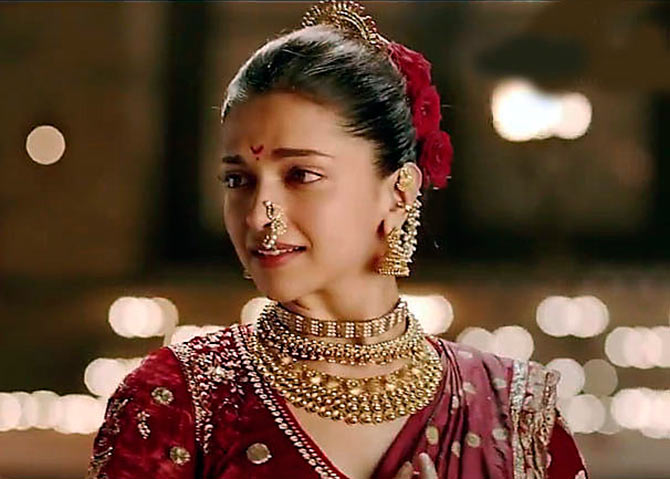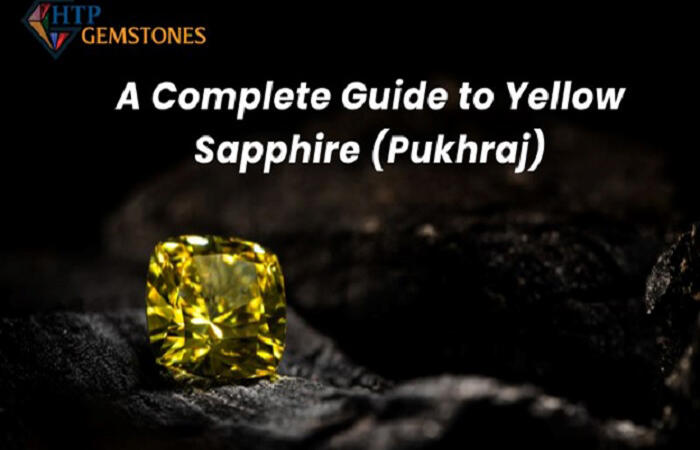Type Of Indian Jewelry

The tradition of adorning oneself with jewelry is 5000 years old in India. Indian women and jewelry have always formed a great combination. The tradition is still alive and time has made it only more vigorous than earlier. The art of making beautiful ornaments, with delicacy and acumen, has been developed throughout historical times. Rulers and feudal lords gave patronage to art and artists, to develop the same to the optimum. There is jewelry for almost all the body parts, including neck, ear, nose, arms, ankles, fingers, waist, hair parting, etc.
In India, jewelry is designed to match the attire. The theme of its design, as well as the color of the jewelry, is taken into consideration while adoring. To make jewelry more attractive, it is topped with diamonds and various types of gems. Traditionally, Indian jewelry has been made of heavy and voluminous gold pieces, but recently jewelry made of silver, platinum, and other metals have become quite popular among people. The popularity of jewelry made of stone, encrusted on metal, has grown more recently.
Bridal Jewelry
An Indian bride is deemed incomplete without her sixteen adornments and jewelry forms an essential part of these adornments. On the main wedding day, every bride is expected to look her best. To achieve this goal, the bride pays special attention to her wedding attire, jewelry, accessories, makeup, and hairstyle. There are a number of items in the jewelry which cover, almost all the vital parts of the body. These items are specially prepared to complement the bridal dress.
The bridal jewelry consists of the following items. Maangtika, Necklace, Ear Rings, Nose Ring, Bangles, Arm Bands, Rings, Waist Band, and Anklets and Toe Rings.
Antique Jewelry
The jewelry which is not in mainstream production and of which the mode of production is no longer popular is known by the name of ‘Antique Jewellery.’
This kind of jewelry has a dull and rough look, combined with an old-world charm, and this serves as the major USP of such jewelry. It takes you back to the yore era, by its unfinished and dull looks. The jewelry pieces in antique jewelry usually belong to a particular period of history, when its popularity was at its peak.
Bead Jewelry
Bead art in India is five thousand years old and dates back to the time of the Indus Valley Civilization. People of that civilization used to make beads out of gold, silver, copper, clay, ivory, and even wood. The excavation carried out, there came out with finished and unfinished beads from the site.
After looking at them, one gets amazed at the wonderful sense of beadwork and jewelry at that time. India is amongst the largest producers of glass beads and particularly, the beads produced in Banaras are exported in large quantities.
Custom Jewelry
Custom jewelry is personalized jewelry, which a customer gets made on her interest and fancy. This happens particularly in cases where readymade jewelry does not match the taste of the person.
Custom jewelry gives total freedom to the customer about the specifics. She can ask for various personal touches and get everything made as per her ideas. In fact, it gives ample space for personal choice and taste to the customer, which is not available in the case of readymade jewelry.
Copper Jewelry
Handcrafted from copper and brass the unique Creative Designs copper product range has been inspired by the sights and sounds of Ancient India. In buying these products, you are contributing to the continuation of one of India’s most traditional art forms.
Fashion Jewelry
Fashion jewelry is also called costume jewelry, mainly for the reason that it is not made of precious metals and stones, rather lighter and cheaper materials is used. Fashion jewelry is trend-conscious and keeps on changing as per changing needs.
For those who are open to experimentation with new and unusual designs, shapes, and colors, costume jewelry offers a plethora of choices. Rather than using precious ingredients, like gold, silver, platinum, and white gold, fashion jewelry designers use cheap products, like jute, leather, peppier mache, bakelite plastic, wood, bone, stone, oxidized metal, horn, lac, terracotta, etc.
Filigree Jewelry
Filigree work is done on silver and involves lots of precision and technicality, added with a great amount of patience and an eye for minute details. Historically, filigree work was quite popular in countries like Egypt, Italy, and Spain.
India’s history of filigree work goes back to the early centuries. Indian filigree work is unique in its genre and aesthetics. It is immensely inspired by Greek filigree work, the same style, and old charm that has been kept intact until now, by Indian artisans. Filigree jewelry is mainly popular in Orissa and Andhra Pradesh.
Gold Jewelry
Gold is a metal that lures many. It gives the security against any financial crisis, because of its easy liquidity, and is also used by women for adorning themselves. Traditionally, gold has been considered auspicious among Hindus and is regarded to be symbolic of Lakshmi, the Goddess of Wealth.
Gold is a symbol of perfection, immortality, and prosperity; it is the substance that myths and legends are made of. It is a favorite for making jewelry, for the reason that it is anti-rust and has an everlasting shine.
Handmade Jewelry
Talking about jewelry manufacturing in India is as good as talking about handmade jewelry in India. A major chunk of jewelry in the country is made by independent craftsmen.
Traditionally also, a significant part of jewelry manufacturing has been handmade jewelry. Big and feudal families used to have their personal jewelers, who would entertain their demands. These jewelers were expected to design ornaments, keeping in mind the individual needs and desires of customers.
Ivory Jewelry
Jewelry that is made from the tusk of an elephant is called ivory jewelry. The importance of ivory jewelry can be guessed from the fact that in Gujarat, the bride receives an ivory bangle from her family just before marriage as jewelry.
During the marriage ceremony wearing ivory, bangles are a must for the bride in some regions of the country. For example, in Rajasthan also, ivory bangles form a part of bridal jewelry. Other than bangles, an ivory pendant that is attached to a necklace or earring is quite popular in India.
Jadau Jewelry
Jadau Jewelry forms one of the major examples of high skilled craftsmanship that was brought into India by Mughals. Historically speaking, the tradition of Jadau work has been in practice in the states of Rajasthan and Gujarat since the Mughal era.
Jadau jewelry is also called engraved jewelry and is unique and a kind in itself. Considered to be traditional jewelry of India, it is used on many traditional and auspicious occasions, like marriages and festival celebrations.
Kundan Jewelry
During the Mughal period, the art of Kundan’s work reached Rajasthan from Delhi. Later on, craftsmen from different parts of the country migrated to the place and made Rajasthan a hub of Kundankari. Rulers and feudal lords gave patronage to the art and it developed into perfection.
Today, Kundankari has known the world over, with Rajasthan serving as its epicenter. Kundankari is basically done on gold and silver jewelry. The beauty of Kundan’s work lies in the precise setting of stones into Kundan and the overall look of the ornament.
Lac Jewelry
Lac jewelry, also known as lacquer jewelry, originated in Rajasthan and has gained considerable popularity in India today. Lac jewelry is available in versatile designs, which add to its beauty. Among the various items in lac jewelry, the bangles need a special mention.
Bangles made of Lac are of bright color and glass work done on them makes them more attractive. Rajasthani people believe that lac bangles bring a good omen to those who wear them. They are very popular in Rajasthan and lately are being made in other parts of the country too.
Meenakari Jewelry
In Meenakari jewelry, precious stones are set and then enameled with gold. Historically speaking, the art was introduced to Rajasthan artisans by Raja Mansingh of Amer. He invited Lahore-based skilled artisans to his kingdom, and their intermingling with the local’s craftsmen resulted in an amalgam, which came to be known as Meenakari.
Meenakari is also teamwork, where specialization of skill is of paramount importance. As it is generally done on the reverse side of Kundan jewelry, meenakari has to work with Goldsmith, engraver or ghaaria, designer or chitteria as well as jadiya.
Navratna Jewelry
In Navratna jewelry, nine auspicious stones are used in a single ornament. The belief behind this is that the nine stones together ensure well being of the person who wears it. In India, Navratna jewelry has been given major importance, because of its astrological significance as well as its innate charm.
The nine stones used in the jewelry are diamond, ruby, emerald, coral, pearl, sapphire, garnet, topaz, and cat’s eye. As it is believed in astrology, each planet watches over one of the nine gems and offers power.
i. Ruby protects against poisonous substances and banishes any evil spirits that hover around.
ii. Emerald is an antidote for all stomach complaints, stings, and bites.
iii. Blue has always been the color of enlightenment and in Buddhism, the wearing of Sapphire was said to increase devotion.
iv. Coral is extremely popular, as it is a stone that is said to cure diseases, help the memory and act as powerful protection against evil spirits.
v. Pearls give strength to the heart and are often used in Ayurvedic medicine. In India, pearls have always been a favorite ornament in royal courts.
vi. Garnet is found in many colors, though the best known is deep red, almost resembling a ruby. Garnets are often used to imitate precious stones but have not been recorded as having any special properties of protection.
vii. Topaz is used for occult practices. It is used in the Middle East, for averting evil, and is said to bring wealth and long life to the wearer.
viii. Cat’s Eye is usually brownish-yellow in color. There is often a light line, which shines through the stone, giving the idea of the eye from which it derives its name.
Pachchikam Jewelry
In the world of fashion and design, old trends tend to come over again and again, though with slight changes. Pachchikam jewelry of making craft is one of the examples of jewelry that has come back once again.
Originated in Gujarat and Kutch, centuries ago, Pachchikam jewelry has again become popular and now, is very much in fashion. Many contemporary designers are today inspired by the art of Pachchikam jewelry and they are leading the way for further development in the art.
Silver Jewelry
Silver Jewellery, along with gold jewelry is quite popular amongst Indian women. Ornaments made of silver, such as rings, bracelets, chains, necklaces, nose rings, earrings, toe rings, heavy kadas, and armlets, form an integral part of Indian jewelry. Gold jewelry has been the most popular among Indian women.
For ages, silver jewelry is not been far behind in popularity. Apart from cities, it finds solace in the rural areas and tribal areas of the country as well. In fact, silver-made jewelry forms an integral part of the adoration and dress of tribal people.
Stone Jewelry
Jewelry studded with different gems is quite popular among Indians. For reasons ranging from spiritual to aesthetic to health, gemstone jewelry has become a part of the life of Indian women and men. These stone jewelry are worn according to the individual’s astrological chart and the ruling of the planet.
Navaratna i.e. the combination of nine gems together, to form a necklace forms an important part of the life and fashion of Indian women. These stones are believed to have extraordinary healing power.
Temple Jewelry
Indian jewelry art is at times divided into three kinds – temple jewelry, spiritual jewelry, and bridal jewelry. Temple jewelry of India initially used to be described as the jewelry used to adorn the idols of Gods and Goddesses.
The statues in India were ornamented with chunky necklaces that were either strung with beads or crafted with intricate filigree. Amongst the other ornaments that adorned statues of deities were large chunky bangles, usually studded with gems. In addition, earrings, nose rings, and anklets were also used.
Tribal Jewelry
Tribal jewelry in India is quite rich. Each tribe has kept its unique style of jewelry intact even now. The original format of jewelry design has been preserved by ethnic tribal.
Jewelry that is made of bone, wood, clay, shells, and crude metal, by tribals, is not only attractive but also holds a distinct rustic and earthy charm. Tribal jewelry is made of products that are available locally. The unrefined look of their jewelry is something that attracts people the most.






